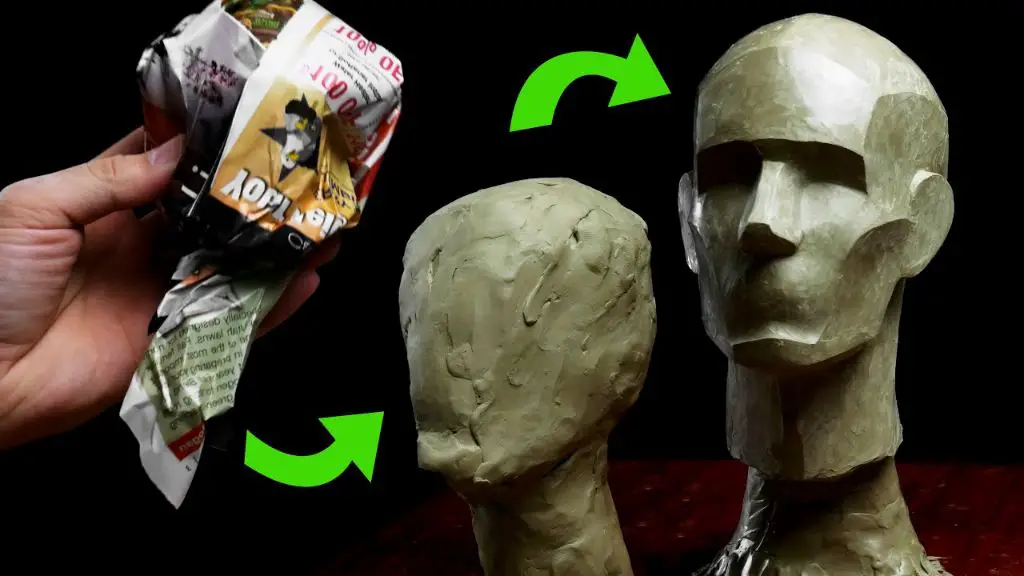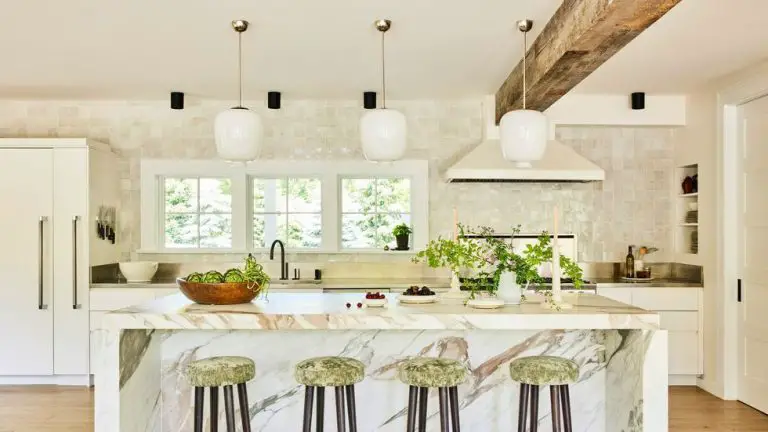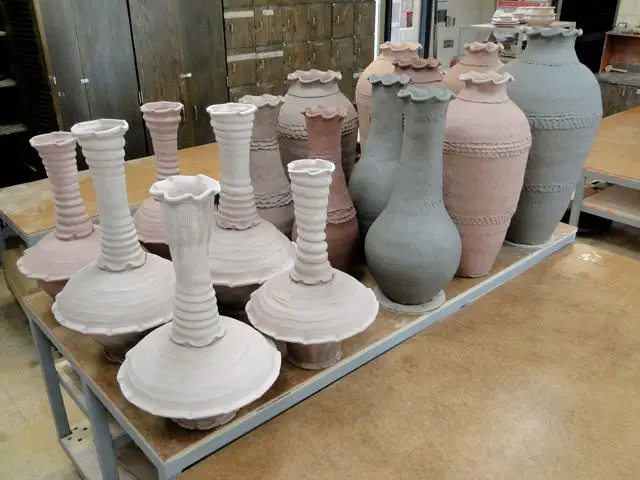What Should I Sculpt For Beginners?
Choose a Simple Subject
When starting out in sculpting, it’s best to choose a simple subject that’s easy to sculpt. This allows you to focus on learning sculpting techniques rather than getting bogged down in intricate details. According to an article on susiebenes.com, beginners should “Be open to non-traditional materials and techniques” when first starting out.
Good options for beginner sculptors include sculpting a person, animal, or common object. Simple subjects like a cat, vase, or human bust enable you to grasp the basics like shaping the form and adding defining details. More complex subjects like a full human figure or building facade may overwhelm new sculptors.
Beginners should focus their efforts on common sculpting materials like clay or soap, which are easy to shape and refine. Save more difficult materials like stone or metal for later, once basic sculpting skills are developed. With practice over time on simple subjects, new sculptors can work their way up to more advanced creations.
Gather Supplies
Before you can start sculpting, you need to gather the proper tools and materials. Some basic sculpting tools you’ll need include loop tools, rib tools, and wooden modeling sticks to shape and refine the clay (https://www.marilynrodriguez.com/basic-tools-and-supplies-you-will-need-to-sculpt-from-home.html). You’ll also need an appropriate sculpting medium like polymer clay, plasticine, or modeling clay. The type of clay you choose will depend on your specific project and preferences.
Polymer clay is a popular choice for beginner sculptors because it’s easy to work with and doesn’t dry out. It also hardens when baked, allowing you to create durable sculptures. Plasticine provides good flexibility but won’t harden. Clay is inexpensive and very malleable when wet, but requires firing in a kiln when finished. Gather the basics to start, then accumulate more specialized tools over time as you advance your skills.
Learn Sculpting Techniques
There are several fundamental sculpting techniques beginners should familiarize themselves with. Two of the main techniques are subtractive sculpting and additive sculpting. Subtractive sculpting involves taking away material from a larger block to reveal the desired form. This technique is common with mediums like stone or wood. Additive sculpting builds up the form by adding more and more material, like with clay. Another key technique is modeling, which is shaping a malleable material like clay by hand. Carving is a form of subtractive sculpting using tools to cut into wood, stone, or other materials. Understanding the core sculpting processes like these is important for beginners before moving on to more advanced practices. For more on sculpting techniques, refer to this overview.
Start with an Armature
For beginner sculptors, it’s wise to start by creating an armature. An armature is an internal framework that provides structure and support for the sculpture. It’s typically made out of wire, which allows it to be shaped to the desired form.
Making an armature has many benefits for beginners:
- It provides a solid foundation to build the sculpture on top of.
- The wire allows you to pose and position the sculpture more easily.
- It makes the finished piece much sturdier and durable.
- It’s easier to work with than trying to sculpt freestanding forms.
To make a simple wire armature, you’ll need pliers, wire cutters, modeling wire, and wire for wrapping and attaching. Use thicker gauge wire for the main structure, and thinner wire to wrap joints. Follow anatomical references to shape the basic form first.
Once the armature is shaped, begin applying clay over the frame to build up the sculpture. The armature provides vital interior support, allowing you to focus on perfecting the exterior clay forms. As a beginner, learning to craft a proper armature will make sculpting much more achievable.
For detailed guidance, refer to this excellent tutorial: https://www.instructables.com/Make-an-Armature-for-Sculpting/
Focus on Shape
One of the most important steps when sculpting for beginners is to focus first on developing the overall proportions and shapes before adding finer details. It’s tempting to jump right into etching intricate designs, but learning to analyze and recreate the basic shapes from reference photos is a critical skill.
As recommended in the book “How to sculpt and decorate spectacular novelty cakes” (https://www.amazon.com/Sensational-Sculpted-Cakes-amazing-decorate/dp/1782211977), sculpting freehand shapes or using templates to outline the general form helps beginners establish proper dimensions. Building up the underlying foundation provides the structure to then layer details upon. Rushing ahead to detail work without mastering the core shape often results in lopsided or distorted sculptures.
Take the time to study your reference images and recreate the proportions accurately. Sketch outlines if needed to map the contours. Use calipers or rulers to measure comparative sizes. As one Reddit user advised when sculpting a costume design, focus on forming key shapes like scales or feathers before refining each individually (https://www.reddit.com/r/sewhelp/comments/11s79xx/does_anyone_know_how_i_would_create_this_kind_of/). Mastering the overall silhouette establishes the base to craft a proportional, realistic sculpture.
Refine Basic Forms

Once you have established the basic shapes and proportions of your sculpture, the next step is to refine the forms to add realism and detail. Carefully look at your sculpture from all angles and use your sculpting tools to refine curves, hollows, and planes to build the forms.
Check proportions as you work to ensure body parts are accurately sized in relation to each other. For example, measure the length of the arm against the torso to ensure proper proportions. Use calipers or a ruler to take key measurements.
Smooth out any unwanted ridges or uneven textures using a surform tool or sandpaper. Define muscular forms by emphasizing shadows and highlights. For example, accentuate the hollow of the collarbone or curve of the bicep.
Take your time perfecting the forms. Don’t rush to detail too soon. Refining the core structure will provide a solid foundation before adding intricate details.
Add Details
Gradually layer on smaller details like eyes, nose, fingers. Work symmetrically and observe carefully. Start with the major forms and proportions before focusing on finer details. Be patient and don’t rush this step, as subtle details make a sculpt feel more realistic and alive.
According to this tutorial, when adding details in Blender, use smaller brushes and lower brush strength for finer control: https://blender.stackexchange.com/questions/120603/how-do-i-add-detail-when-sculpting
Work methodically and zoom in to see the form up close. Refine shapes and correct any imperfections. Pay attention to textures, wrinkles, pores, etc. to enhance realism. Observe reference images as you work. Save versions periodically in case you need to undo any changes.
Practice Consistently
Dedicate time daily to build muscle memory and skills. Consistent practice is key to improving as a sculptor. Set aside time each day, even if just an hour, to work on sculpting. This regular practice will train your hands and mind, building dexterity and deepening your understanding of forms and techniques. As your skills improve, you’ll gain confidence and be able to work more quickly and accurately.
Take classes if possible. Consider taking sculpting classes, either online or in-person. Having an experienced instructor provide feedback and guidance can significantly accelerate your learning. Classes also provide structure and accountability. Surrounding yourself with other sculptors creates a motivating and inspiring environment.
Be patient and keep challenging yourself. Progress will come gradually. Don’t get discouraged if pieces don’t turn out perfectly at first. With consistent practice over weeks and months, you’ll start to see noticeable improvement. Seek out increasingly complex projects that push your abilities. This will expand your skills and keep development moving forward.
Analyze Your Work
As a beginner, it’s important to critically analyze your sculpture as you go. Look for imperfections and areas for improvement. To properly critique your own work:
Be objective and try to view the sculpture from the perspective of someone seeing it for the first time (https://drawpaintacademy.com/critique-your-art/). Don’t let your emotional attachment to the piece cloud your judgment.
Analyze the technical execution, including the armature, proportions, shapes, and detailing. Identify any structural or anatomical flaws.
Consider the concept and meaning of the piece. Did you successfully convey your intent? Is the sculpture visually interesting and compelling?
Evaluate the use of mediums and methods. Do the materials suit the subject matter and style? Are the textures and finishes well-executed?
Getting constructive feedback from others can provide an outside perspective. Join a local sculpting group or class to share works and exchange critique. Online communities like Reddit can also offer helpful evaluation (https://www.wikihow.com/Critique-Artwork).
Continuously analyzing your developing skills will help you pinpoint areas for growth. Strive for improvement with each new sculpture.
Have Patience
Learning any new skill takes time and sculpting is no exception. When starting out, it’s important not to get frustrated and to have patience with yourself. Take your time and don’t rush the process. Mistakes are part of learning. The more you sculpt, the more comfortable you’ll become with the techniques and medium.
Sculpting requires developing muscle memory and an understanding of forms, textures, and shapes. This can’t be rushed. Give yourself time to experiment and don’t expect to create masterpieces right away. With consistent practice, you’ll start seeing steady improvement over weeks and months.
Focus on small sections and details rather than trying to sculpt an entire figure all at once. Don’t get discouraged if your early attempts don’t turn out as imagined. It takes most beginners at least a few months before they can sculpt recognizable figures and portraits. Allow your abilities to blossom slowly with daily practice.
Learning sculpture is about the journey as much as the result. Savor the process and celebrate small victories. Setting unreasonable expectations will only lead to frustration. With dedication and patience, sculpting can become an enjoyable and rewarding lifelong hobby.


